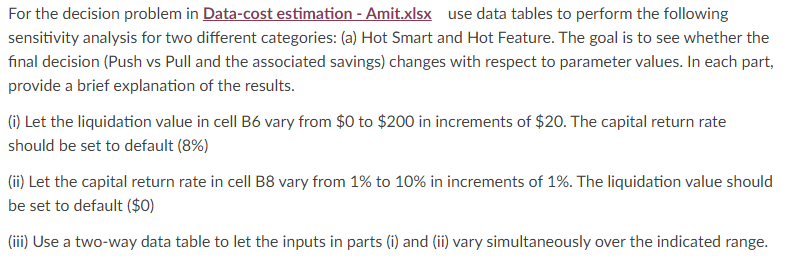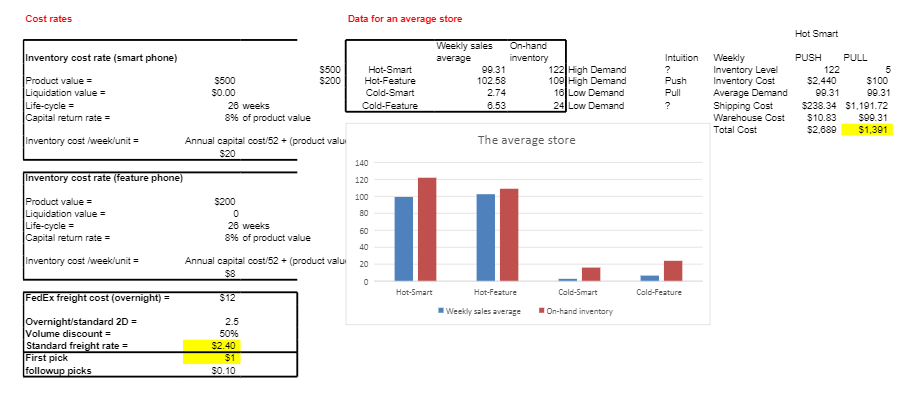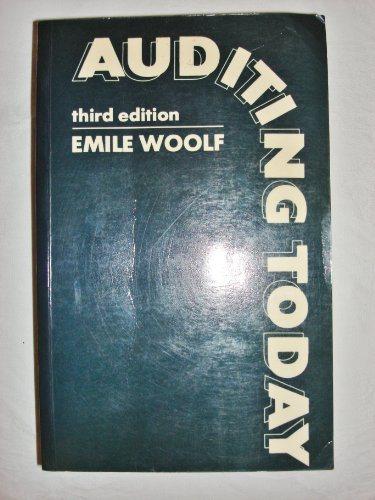Answered step by step
Verified Expert Solution
Question
1 Approved Answer
Please let me know if I need to split up into multiple questions. For the decision problem in Data-cost estimation - Amit.xlsx use data tables


Please let me know if I need to split up into multiple questions.
For the decision problem in Data-cost estimation - Amit.xlsx use data tables to perform the following sensitivity analysis for two different categories: (a) Hot Smart and Hot Feature. The goal is to see whether the final decision (Push vs Pull and the associated savings) changes with respect to parameter values. In each part, provide a brief explanation of the results. (i) Let the liquidation value in cell B6 vary from $0 to $200 in increments of $20. The capital return rate should be set to default (8%) (ii) Let the capital return rate in cell B8 vary from 1% to 10% in increments of 1%. The liquidation value should be set to default ($0) (iii) Use a two-way data table to let the inputs in parts (i) and (ii) vary simultaneously over the indicated range. Cost rates Data for an average store Hot Smart Inventory cost rate (smart phone) Product value = Liquidation value = Life-cycle = Capital return rate = S500 S500 $200 $0.00 26 weeks 896 of product value Annual capital cost/52 + (product valu $20 Hot-Smart Hot-Feature Cold-Smart Cold-Feature Weekly sales On-hand average inventory 99.31 122 High Demand 102.58 109 High Demand 2.74 16 Low Demand 8.53 24 Low Demand Intuition ? Push Pull ? Weekly Inventory Level Inventory Cost Average Demand Shipping Cost Warehouse Cost Total Cost PUSH PULL 122 5 $2,440 $100 99.31 99.31 $238.34 $1,191.72 $10.83 $99.31 $2,689 $1,391 Inventory cost /week/unit = The average store 140 Inventory cost rate (feature phone) 120 100 80 Product value = Liquidation value = Life-cycle = Capital return rate= S200 0 26 weeks 896 of product value 60 | 11 40 Inventory cost /week/unit = Annual capital cost/52 + (product value $8 20 Hot-Smart Cold-Smart $12 Hot-Feature Cold-Feature Weekly sales average On-hand inventory FedEx freight cost (overnight) = Overnight standard 2D = Volume discount = Standard freight rate= First pick followup picks 2.5 50% $2.40 $1 SO 10 For the decision problem in Data-cost estimation - Amit.xlsx use data tables to perform the following sensitivity analysis for two different categories: (a) Hot Smart and Hot Feature. The goal is to see whether the final decision (Push vs Pull and the associated savings) changes with respect to parameter values. In each part, provide a brief explanation of the results. (i) Let the liquidation value in cell B6 vary from $0 to $200 in increments of $20. The capital return rate should be set to default (8%) (ii) Let the capital return rate in cell B8 vary from 1% to 10% in increments of 1%. The liquidation value should be set to default ($0) (iii) Use a two-way data table to let the inputs in parts (i) and (ii) vary simultaneously over the indicated range. Cost rates Data for an average store Hot Smart Inventory cost rate (smart phone) Product value = Liquidation value = Life-cycle = Capital return rate = S500 S500 $200 $0.00 26 weeks 896 of product value Annual capital cost/52 + (product valu $20 Hot-Smart Hot-Feature Cold-Smart Cold-Feature Weekly sales On-hand average inventory 99.31 122 High Demand 102.58 109 High Demand 2.74 16 Low Demand 8.53 24 Low Demand Intuition ? Push Pull ? Weekly Inventory Level Inventory Cost Average Demand Shipping Cost Warehouse Cost Total Cost PUSH PULL 122 5 $2,440 $100 99.31 99.31 $238.34 $1,191.72 $10.83 $99.31 $2,689 $1,391 Inventory cost /week/unit = The average store 140 Inventory cost rate (feature phone) 120 100 80 Product value = Liquidation value = Life-cycle = Capital return rate= S200 0 26 weeks 896 of product value 60 | 11 40 Inventory cost /week/unit = Annual capital cost/52 + (product value $8 20 Hot-Smart Cold-Smart $12 Hot-Feature Cold-Feature Weekly sales average On-hand inventory FedEx freight cost (overnight) = Overnight standard 2D = Volume discount = Standard freight rate= First pick followup picks 2.5 50% $2.40 $1 SO 10Step by Step Solution
There are 3 Steps involved in it
Step: 1

Get Instant Access to Expert-Tailored Solutions
See step-by-step solutions with expert insights and AI powered tools for academic success
Step: 2

Step: 3

Ace Your Homework with AI
Get the answers you need in no time with our AI-driven, step-by-step assistance
Get Started


